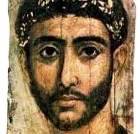What food did Bible people eat?
A Land of Milk and Honey –
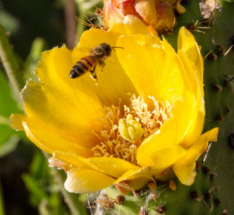
‘Land of Milk and Honey’
and beer and popcorn as well…
What did Bible people eat? Bread, popcorn, beer, wine, spices, vegetables, sweets, olives, meat, eggs, onions, pancakes, melons, dried or fresh fruit, milk, butter, cheese, fish, aromatic stews, even locusts
(see how to cook locusts in Bible Study Activities at the end of this page!)
With instructions on how to recreate a Bible feast!
What did people in the ancient world eat?
According to Kitto in his famous book ‘The Greeks’, an ancient Greek dinner consisted of two courses, the first a kind of porridge and the second, a kind of porridge. This may or may not be true. But the people of ancient Israel certainly ate better than that – maybe better than we do today.
Of course, rich people had more choice. But in Canaan even poor people could eat well. The land was blessed with figs, grapes, wine, honey, olives, fruit, barley, wheat and cattle – it was in fact a land of milk and honey.
Israelite Food
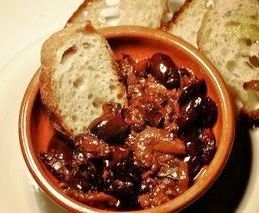
A simple, tasty bowl of olives, baked onions and bread
How do we know about food in ancient times?
There’s the Bible of course, but there are also other sources of information. The 10th century BC Gezer Calendar lists barley, wheat, spelt and millet among the grains, besides olives, grapes, figs, pomegranates, sesame and vegetables.
Where did the food come from?
The main supply came from the householder’s own field, vineyard and vegetable garden – so food was fresh or processed on site.
- The staple food was bread, eaten with water and a little wine.
- Wine was something of a luxury, kept for a special meal or someone of importance.
- Milk and other dairy products were plentiful, eaten with
- fruits and vegetables.
A typical household’s daily diet was almost exclusively vegetarian. Except in the houses of the rich, meat appeared only at special times such as a wedding.
Alcohol in the Bible – did people get drunk?
Then, as now, drunkenness occurred.
- Noah is supposed to have been the first man to be drunk
- Genesis 29 hints that Jacob was easily fooled into having sexual intercourse with Leah because there has been a wild party beforehand –
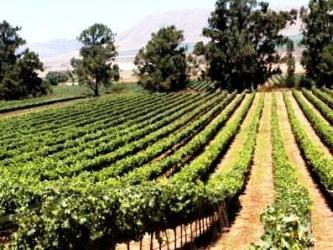
A vineyard in Israel
Jacob was in love with Leah’s sister Rachel, and thought he was marrying her, not Leah
- Beautiful, deadly Judith deliberately got Holofernes dead drunk so that she could slice off his head (Judith 13:2)
Most of the grapes produced in the vineyards went into the making of wine. The country was above all “a land of wine … and vineyards” (2 Kings 18:32) and there is plenty of evidence of this in the remains of ancient wine presses found throughout the land.
Wine, usually mixed with water, was a standard item of diet.
David, Solomon and food
What do the Bible stories tell us about food?
- David may have been Israel’s greatest king, but he was also quite unscrupulous. One incident records him getting food supplies from a young woman, Abigail (see her story here), who jettisoned her husband and took up with the handsome young David. The provisions she brought with her included wheat, barley, meal, parched grain, beans and lentils, honey and curds, and sheep and cheese from the herd.
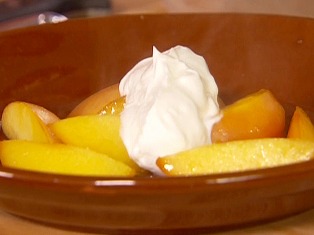
Cooked fruit with yoghurt and honey
Listed like that the provisions seem boring, but you could make a delicious assortment of food items including baked lamb, yogurt mixed with honey, melted cheese on bread, and mixed fruit or vegetable side dishes.
No wonder David decided to marry Abigail. Even in the Bible, the way to a man’s heart was through his stomach.
- Solomon and his court in Jerusalem enjoyed a much more luxurious standard of living. Solomon’s provision for one day was thirty measures of fine flour and sixty measures of meal, ten fat oxen, and twenty pasture-fed cattle, a hundred sheep, besides harts, gazelles, roebucks and fatted fowl. And that was just part of the main course.
Grains
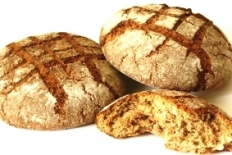
Food in Bible times:
bread was a staple item
Fresh-baked bread
Bread was Israel’s staple food. It was made of flour, either of wheat or barley, ground in a hand mill or quern consisting of two stones. When ground, the flour might be coarse or fine.
Flour was generally made into leavened bread, but at Passover only flat unleavened bread was eaten.
‘Spelt’ is sometimes mentioned in the Bible. This was grain of poor quality. Poor people ate barley bread.
Other ways of using grain
Instead of making bread, grain could also be eaten raw by rolling fresh ears in the hands to free the grain from the husks; there was a law that said you could pluck grain from your neighbor’s field, but not cut it with a sickle.
When Jesus’ disciples were hungry, they picked ears of grain to eat raw.

Grain was roasted to make a sort of popcorn
Grain could also be roasted or parched to produce a sort of popcorn. Boaz, besotted by Ruth (see their love story here), fed her with this when they were eating together in the fields. Some things never change…
Vegetables or fruit could be mixed in with the dough to make a sort of sweetened fruit loaf – very like similar loaves in today’s bakeries.
Vegetables

Onions were a staple item of food in Egypt
When the Hebrews fled from Egypt and followed Moses into the desert, they complained of the mean food they had to eat, compared with the plentiful vegetables they had left behind them in Egypt:
- cucumbers, melons, leeks, onions and garlic.
Since they were now nomadic wanderers, these items were no long available.
What are ‘bitter herbs’?
Many ‘bitter herbs’ grew in the fields. These included chicory and endives, radish, the mustard seed, mandrakes and many others, eaten raw or cooked.
There were five kinds of herbs which might be used for the frugal Passover meal: lettuce, chicory, peppermint, snake root and dandelion.
Condiments and spices
How did Bible people flavour their food?
Spices were essential. Before the introduction of pepper,
- seeds like coriander, black cummin, oregano or nigella, played an important part in recipes
- caper berries were eaten as an appetizer before meals and also used as a condiment
- other herbs were grown, notably mint and rue, which was used mainly for medicinal purposes
- pine nuts, spice, dates, carob beams, walnuts and persimmon were common in Palestine

Harvesting salt from the Dead Sea
Salt was plentiful, coming from the vast salt pans of the Dead Sea. Because of its function as a food preservative, it was a symbol of permanence.
Sweets and fruit
Did Bible people have sugar?
No. Food was sweetened with fig or carob syrup, as sugar was unknown in Bible times. The honey mentioned in the Bible was probably date honey. Bee’s honey was a treat for Samson’s family, but it became more common later in Israel’s history.
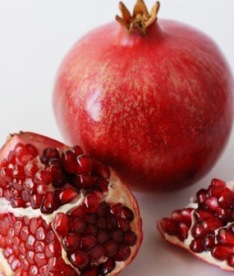
A pomegranate cut open to show the multiple seeds
Fruit trees abounded in Israel. The people were promised a land of wheat and barley, of vines and fig trees and pomegranates, a land of olive trees and honey. And they got it.
What fruits did Bible people have?
- Figs were the most important fruit. Fig trees grew all over the countryside. The annual first-fruits of figs were a great delicacy, much prized.
- Dates were eaten fresh, but they were also dried and pressed into a solid mass so that they could be stored, or transported and sold.
- Other fruit trees included the pomegranate, quince, sycamore or fig-mulberry. Varieties of almonds and walnuts are also mentioned.
- Date palms were a speciality in the Jericho district and provided a source of wealth for both King Herod and Cleopatra – who persuaded Mark Antony to take the plantations away from Herod and give them to her. There was, needless to say, no love lost between Herod and Cleopatra.
Olives
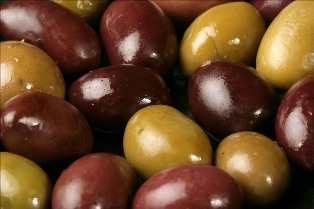
Olives, a staple item in Bible-era meals
How were olives used?
Olives were grown for oil, which took the place of butter and other fats in cooking.
The olives themselves, preserved in brine, were a favourite delicacy and also an important article of food. As in ancient Greece, olives, onions and bread could and did sustain labourers and soldiers for long periods.
The most important use of the olive, however, was to provide oil.
Milk and Dairy Products
Milk from ewes and goats was readily available and dairy products —milk, butter and cheeses— were a regular part of the diet.
Jael gave Sisera milk to drink to lull him to sleep, just before she drove a tent peg through his skull – some goat’s milk products are sleep-inducing.
Meat
Did Bible people eat much meat?
Meat was a special treat and was eaten on high holidays or offered to especially honoured guests, but in general it was not eaten as much as in the modern world. For one thing, it was almost impossible to keep it fresh in the hot climate, and Jews were forbidden to hang meat – it had to be eaten as soon as the animal was killed.
The earliest Passover meal was a roast lamb eaten with bitter herbs and unleavened bread. Throughout the monarchy, meat remained a luxury to the poorer people but it became a regular provision for the tables of the wealthy.
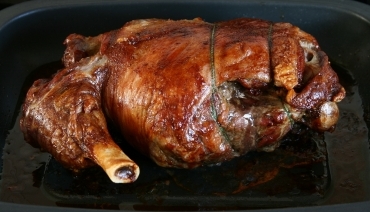
Roast lamb was a luxury,
kept for high days and festivals
What was the ‘fatted calf’?
Right up to New Testament times, the most delectable fare continued to be the “fatted calf”, a specially fattened calf taken directly from the herd to be cooked for the table.
The flesh of the goat, especially young kids, was also highly valued although as meat became more plentiful in post-exilic times, a well-fleeced lamb was preferred and kid became the most frequent sacrificial animal and the one most commonly eaten.
This gives point to the quite reasonable complaint of the Prodigal Son’s elder brother: that he had served his father many years and never disobeyed a command, yet he had never been given even a kid that he “might make merry with my friends”.
But eating a sheep or a calf was discouraged, probably because the fleece was more valuable than the flesh, and any mutton tender enough to eat didn’t have a fleece worth killing it for. A sheep was better alive than dead.
What is ‘kosher’ meat?
All meat had to be kosher – that is, the blood had to be drained off. There were also restrictions on eating fat.
Poultry and eggs
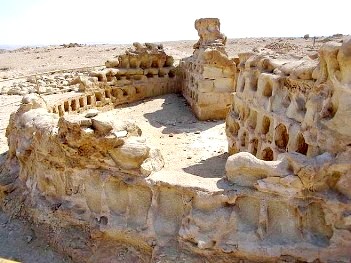
Pigeon coops at Herod’s fortress at Masada
Eggs were eaten, as were fatted fowl such as geese and chickens. Other edible birds included pigeons, partridges and quail.
King Herod the Great had a large number of pigeon coops at his fortress-palace of Masada, and he (or rather, his pigeon-keepers) developed a new breed of pigeon.
Insects and fish
John the Baptist lived on locusts and wild honey in the wilderness. This sounds a bit icky, but in fact the head, wings and legs of the locust were removed, and the body fried in rendered butter or preserved in salt. According to people who have tried this, it tastes salty, like an anchovy.
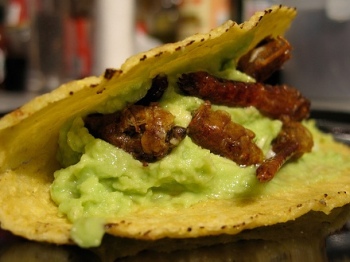
Food in ancient Israel: fried locusts
What about fish?
The fishing industry exploited the fresh-water fish of the Sea of Galilee and the Jordan. The majority of Jesus’ disciples and probably many of his other followers were fishermen.
In addition to supplying fresh fish for the local market, fish were also salted, then cured in the sun. Cured fish were at all times a popular provision for a journey.
- Jesus’ miracle of feeding the five thousand (Mt. 15:32-38) was certainly performed with cured fish, because fresh fish would have gone bad.
- Magdala was a center of the dried fish industry. Odd to think that Mary Magdalene, who probably underwrote Jesus financially, was more likely to have made her money from the dried fish industry than from prostitution, as legend would have it.
Cooking the food
- In the time of the Patriarchs and Matriarchs, there were no kitchens. Food was cooked in the open ‘before the tent’.
- Later, when people lived a more settled life, cooking was done in the closed courtyards of houses.
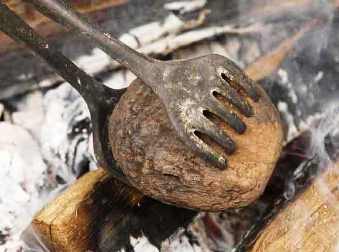
Hot stones were used for cooking
on an open fire
In general, meat was either boiled in a stew in an earthenware pot or roasted over an open fire.
Pancakes made of flour dough and filled with a tasty mixture were fried in oil or baked on hot stones pulled out of the embers of a fire. When Gideon wished to honour his angelic messenger he prepared a meal of unleavened cakes made of flour, boiled meat, and broth in a pot.
Cereals like wheat and barley were roasted on an iron plate or in a pan to make parched ‘popcorn‘, or they might be boiled in a pot to make a coarse porridge.
Fish would be roasted on a charcoal fire, generally using a wooden or iron spit, although the fish eaten by the disciples of Jesus was cooked directly on the charcoal.
Baking
The cakes the widow of Zarephath made for Elijah were baked on hot stones and covered with embers. Thin wafers of dough spread with oil, sometimes strewn with seeds, were baked in an earthenware oven.
Sometimes cakes would be baked with honey.
Cooking Utensils
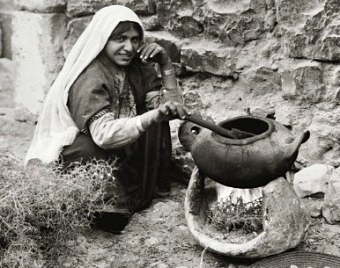
Middle Eastern woman cooking
on a portable stove
Iron utensils used in baking and cooking were the griddle or baking pan, which was a shallow iron plate, and the frying pan. Ordinary cooking dishes and pots were at first of baked, unglazed clay, while ritual vessels and a few special dishes were of copper.
- Knives to cut meat were at first made of flint, later of bronze.
- Forks were not used, apart from a single large one for lifting the pieces of meat out of the pot, a three-pronged fork.
Cooking was often done on an open hearth. Most houses excavated have a depression of varying size in the floor, either in the centre or in a corner, bearing clear traces of fire. Obviously, this was the family hearth.
Sometimes more elaborate hearths (ovens) were built. The oven used to bake bread was a portable jar or receptacle of terra cotta, which could be heated over a fire.
Meals
What did Bible people eat for breakfast?
Breakfast was simply a light meal of bread and olives, with an onion or any other fruit or vegetable which might be in season.
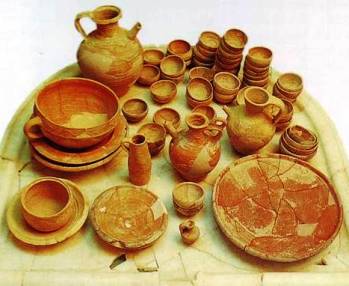
1st century pottery excavated in Israel
What did Bible people eat for lunch?
The midday meal was eaten at noon in the fields or at home, and consisted of bread soaked in wine with a handful of parched corn, a pottage of bread broken into a bowl, or bread and grilled fish.
When did Bible people eat their main meal?
According to the Bible and also to Josephus, the Jewish historian, the main meal of the day was eaten in the evening, usually a little before and after sunset, before it became pitch dark.
- Ordinary people sat on the ground to eat, on cushions, mats of straw or woven rugs.
- For the wealthy, food was served on low wooden tables with people sitting around on couches or divans.
Summary
People in the ancient world were dependent on the weather – much more than we are today.
- In good seasons they ate well.
- In bad seasons they often went hungry, or even starved.
They coped with this uncertainty in two ways:
- they learned to dry and store food so that they had reserve stocks – as the Bible describes, and
- they developed a stoic faith in God’s love and providence.
Bible people’s diet was varied and tasty.
Put this to the test by living on biblical foodstuffs for a week.
See if you can do it!
Bible study activities
Recreate a simple Bible meal with:
- Turkish flat bread or a plain biscuit

The head, wings and legs of the locust were removed and the body fried in rendered butter
- Roast or stewed lamb, either hot or cold
- Cheese, yogurt or butter
- Dried or fresh fruit
- Fish, eggs or chicken
- Olives
- Wine
- Dried fruit, honey
- Salad vegetables
Recreate a Bible feast
- Have a main course of lamb; to make this, first cut the meat into small pieces
- marinate this meat in oil, vinegar, salt and some herbs like oregano and thyme – (many marinades have pretty much the same ingredients
- leave it soaking in the mixture overnight
- cook it lightly in a frying pan, tossing it around so that all sides are seared; a spoonful of honey added just before you finish cooking lends a stronger flavor
- serve this with Turkish-style flat bread (unleavened bread), grated goats’ cheese and olives
- for sweets, you could have figs or dates served with yoghurt and honey
- accompany it with a light wine mixed with water
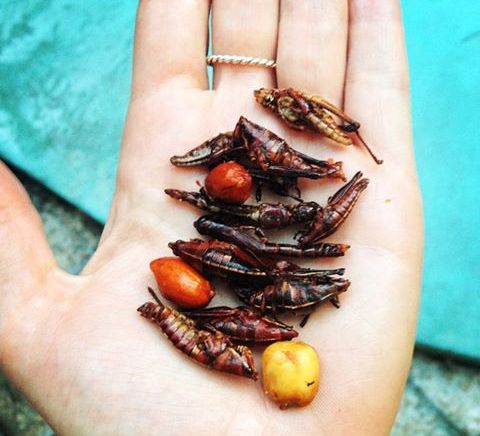
Fried locusts with nuts
Search Box
![]()
Food links
Jesus and his apostles ate bread and wine at the Last Supper; these were food staples
Date palms were a speciality in the Jericho district and provided wealth for both King Herod and Cleopatra
© Copyright 2006
Elizabeth Fletcher





